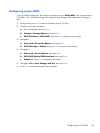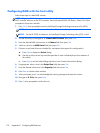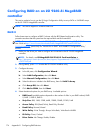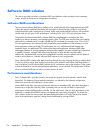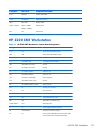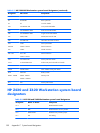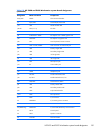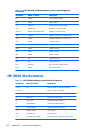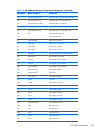Software RAID solution
This section provides a summary of software RAID considerations when running the Linux operating
system, as well as references to configuration procedures.
Software RAID considerations
The Linux kernel software RAID driver (called md, for multiple device) offers integrated software RAID
without the need for additional hardware disk controllers or kernel patches. All that is required are
multiple hard disks and a small amount of setup. Unlike most hardware RAID solutions, software RAID
can be used with all types of disk technologies, including SATA, SAS, SCSI and solid state drives.
Compared to hardware-based RAID, software RAID has disadvantages in managing the disks,
breaking up data as necessary, and managing parity data. The CPU must assume some extra loading:
disk-intensive workloads result in roughly double the CPU overhead (for example, from 15% to 30%).
For most applications, this overhead is easily handled by excess headroom in the processors. But for
some applications where disk and CPU performance are very well balanced and already near-
bottleneck levels, this additional CPU overhead can become troublesome. Hardware RAID offers
advantages because of its large hardware cache and the capability for better scheduling of operations
in parallel. However, software RAID offers more flexibility for disk and disk controller setup.
Additionally, hardware RAID requires that a failed RAID controller must be replaced with an identical
model to avoid data loss, whereas software RAID imposes no such requirements.
Some software RAID schemes offer data protection through mirroring (copying the data to multiple disks
in case one fails) or parity data (checksums that allow error detection and limited rebuilding of data in
case of a failure), but all software RAID solutions on HP workstations require the shutdown of the system
so that the failed drive can be replaced before redundancy can be restored. The replacement of failed
drives in software RAID requires only a minimum amount of work.
Performance considerations
Disk I/O bandwidth is typically limited by the system bus speeds, the disk controller, and the disks
themselves. The balance of these hardware limitations, as affected by the software configuration,
determines where the real bottleneck is in the system.
Several RAID levels offer improved performance relative to a standalone disk. If the disk throughput is
lessened by a single disk controller, there is probably little you can do with RAID to improve the
performance without adding another controller. On the other hand, if the raw disk performance is the
bottleneck, a tuned software RAID solution can dramatically improve the throughput. The slower the
disk is relative to the rest of the system, the better RAID performance will scale, because the slowest
piece of the performance pipeline is being directly addressed by moving to RAID.
176 Appendix B Configuring RAID devices




